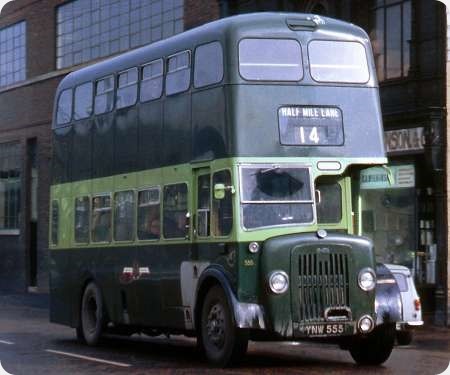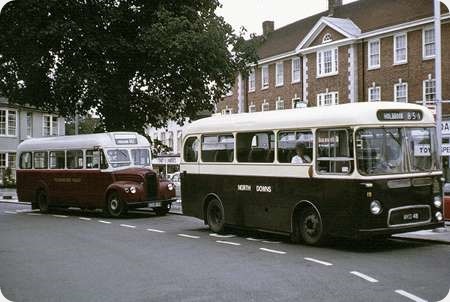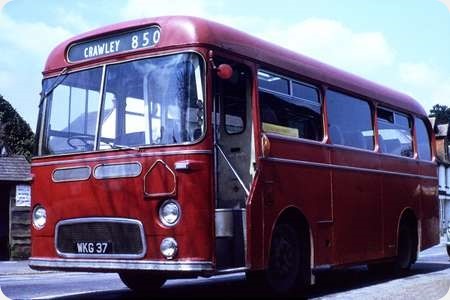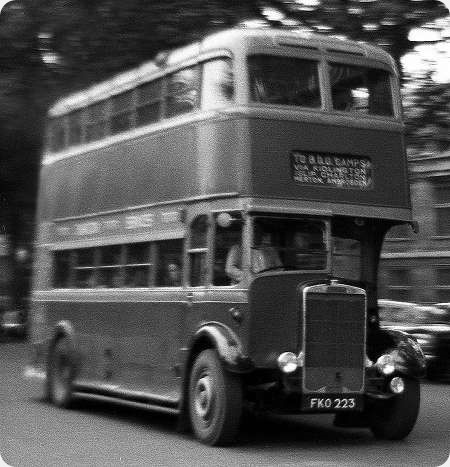
Leeds City Transport
1957
Daimler CVG6
Weymann H33/27R
Photographed in April 1970 in the dignified livery of Leeds City Transport is Daimler CVG6, Weymann
H33/27R, YNW 555, No. 555, one of a batch of twenty delivered in September 1957. This bus remained in
service to pass to WYPTE on 1 April 1974.
Photograph and Copy contributed by Roger Cox
10/10/18 - 05:21
Like many municipalities, Leeds Corporation got full value out of its
vehicles, in this case, at least 17 years. Of course, with the impending threat of having to hand
over its vehicles to the WYPTE, it might well have just decided not to replace the older ones at
that stage!
Do we know when it was finally withdrawn?
One of my two trips to Leeds was
to travel its tram system, with its Felthams, in 1957/58, I think. I was shocked at its closure soon
afterwards, which seemed illogical with so much of it on reserved track and no employee mentioned
impending doom on my visit. Does anyone know what changed to shut it down in such a short
timescale?
Chris Hebbron
11/10/18 - 05:32
Volume 4 of "Leeds Transport" actually reports that 555 was
withdrawn on 30/09/1971 and went to a Barnsley dealer for scrapping November 1972.
Dave Towers
12/10/18 - 06:50
Thanks for that correction, Dave, which I entirely accept. Not possessing a
historic Leeds fleetlist, I did find a site that listed this batch of Daimlers as passing to the
PTE, but now cannot find it. I understand that these Daimlers had air operated brakes and
gearchange, which mercifully shielded unwary drivers from the decidedly painful (I speak from
experience with the Halifax examples) affliction known as "Daimler knee".
Roger Cox
23/10/18 - 05:48
The Leeds Tramway was earmarked for closure from the very early fifties. This
was despite a good deal of pro tram sentiments among the public.
These and a similar batch
bought a year earlier were Leeds fist buses with tin front.
Chris Hough
06/06/21 - 06:39
Yes as Chris said the Leeds system was earmarked for closure in the 1960’s but
events brought the sad end earlier than expected on the 7th November 1959. Its quite amazing the
number of photographs, both black and white and colour, of the system that are still around. It must
be said that a great debit is owed to the National Tramway Museum and the LTHS and collectors such
as Robert Mack, Keith Terry and Jim Soper and no doubt countless others.
David Walton
01/09/22 - 07:19
Recently I have been looking at the Leeds and District Transport News back
issues for the 1950’s and Daimler CVG6 and CVD6 are both referred to at different times as having
the name Victory. I think this could be a mistake, the CVD6 could be rightly given this term, but
not the CVG6. What does your readership know about this.
David Patrick Walton
04/09/22 - 06:52
Why not the CVG6…please explain, David? Surely the chassis was what
mattered, not the engine. Incidentally, there were CVA6’s, too, although not in Leeds.
Chris Hebbron
05/09/22 - 07:04
Does David not understand the Daimler naming system?
COG Coventry Oil
engine Gardner. Pre-war. AEC engines also available.
CWG Coventry Wartime Gardner. Wartime.
AEC engines available.
CVG Coventry Victory Gardner. Post-war. AEC/Daimler available
David Oldfield
06/09/22 - 05:26
I would suggest that the "naming" suggested by David Oldfield
referred to the model coding system rather than the naming of the chassis as such.
The
Daimler CWA6, CWD6 and CWG5 models were all known as "Wartime Daimlers".
Thus the
Daimler CVD6, CVG5, CVG6 and CVA6 became known as "Victory Daimlers" in the early post-war
years to reflect the new Daimler chassis introduced after the war, irrespective of the engine
fitted, but I have not heard the name Victory being applied to anything new after about 1948/9.
John Kaye




